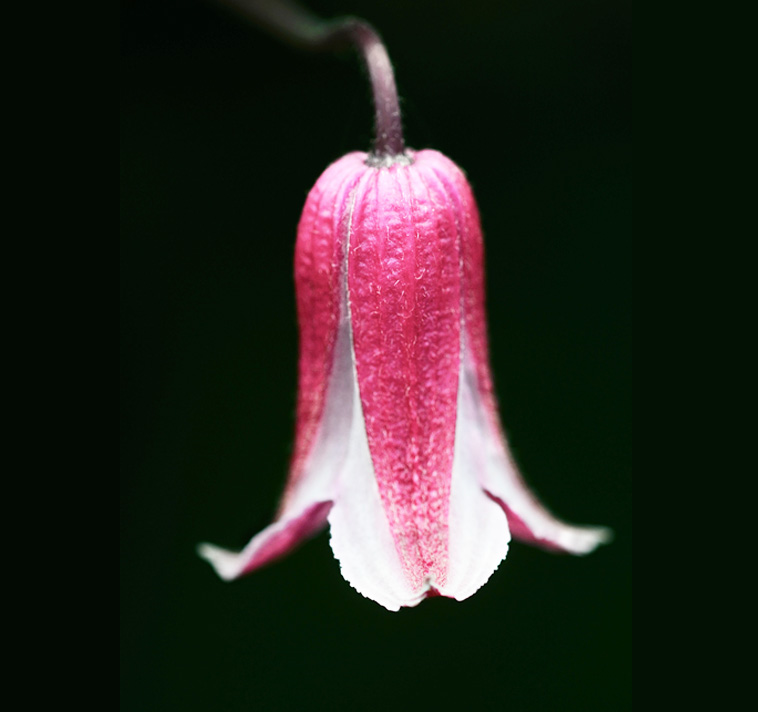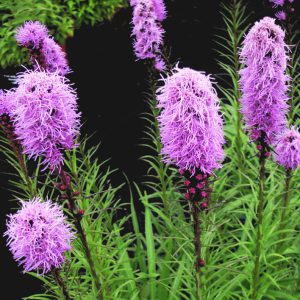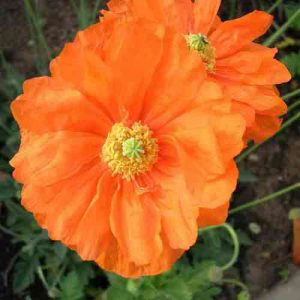- 1-9 pkts $4.50
- 10 pkts FREE
- Express post $12
Clematis texensis
TEXAS CLEMATIS
Clematis texensis is a delightful light and dainty climber.
Rose red dangling bells like upside down tulips
Bearing rose-red dangling bells resembling upside down tulips.
With the petal tips curled back like a pagoda on each flower in the flock .
Flocks of flying pagodas
Clematis texensis (which does come from Texas by the way) is great value.
As it produces masses of flowers, and for a very long period from mid summer on through autumn.
Graceful light climber
Texas Clematis is a very fine and light climber, so it is ideal for scrambling through tall shrubs; up into fruit trees; on a fence or trellis; and over an arch.
It can scramble up to 1.5m. high, or even up to 3m if it is reaching up to seek the light.
But it is never heavy or overwhelming for its host, cohabiting amongst the branches of a supporting shrub to the advantage of both.
Summer & autumn blooms for a spring flowering shrub
So I grow my Clematis texensis up through a spring flowering Viburnum shrub.
Then the summer and autumn blooms of the Clematis follow up from the spring Viburnum flowers – to give great value and a long season of interest in the one space.
The Viburnum does not mind at all, and the Clematis likes the shade from its Viburnum host.
Clematis love their heads in the sun and feet in the shade
Clematis are natural born climbers and designed to live in the same same space as their host shrub / tree.
So their preferred position is somewhere where they can have their feet in the shade, and then climb their way up to have their head in the sun.
But if your Clematis does not have an overhead shrub to provide shade at its feet – then cover the root area with a gravel mulch or some pavers to keep the roots cool.
Winter prune & chop back hard
There is often confusion about when to prune the various types of Clematis.
But Clematis texensis is easy – it flowers on new season stems – so prune in winter when you prune the roses; and chop it back hard to about 30cm. above the ground.
And then it will spend the spring and early summer climbing back up with fresh growth, and bloom its head off from mid-summer on.
Easy low maintenance climber
Clematis texensis is very frost hardy and can withstand temperatures down to approx. -30C.
Then it can also cope with summer humidity, as befits a native of Texas.
Low maintenance & low water needs
It is also a low maintenance plant (other than the winter chop) and only requires normal, average garden watering.
Clematis texensis is amongst the hardiest of all Clematis when it needs to withstand a period of dry.
Plus it can handle a wide range of soil types, from sandy to clay and all points in between.
Perfect rose companion
Clematis texensis also enjoys some lime, just as the roses do – so it is often grown to scramble amongst the branches of a climbing rose, then they both get a chop at the same time., and look divine together.
Rabbit, deer & even possums leave it alone
Bliss – all of our worst chewing foes are not attracted to the taste of Clematis and generally leave them alone.
SEED SOWING ADVICE:
Sow indoors at any time.
Sow indoors for best germination: First sow the seeds in punnet on the surface of good quality seed raising mix.
Then lightly cover with seed mix, sand or vermiculite to a depth the same as the diameter of seed.
Now ensure the punnet is thoroughly moist all the way through by soaking it in a water-bath and allowing the moisture to percolate through from beneath.
Then place the moist punnet in a warm, well-lit position (not in direct sunlight) for 2-4 weeks.
Temperatures of approx. 18-22C are best at this stage for optimum and rapid germination.
You can use a temperature controlled heat mat to maintain best temperatures.
Continue to keep consistently moist by misting from a spray water bottle.
And covering the punnet with a clear cover or plastic bag will help to maintain consistent moisture.
After 2-4 weeks in moist warmth, then the seeds need a period of chilling (a “pretend winter”).
So wrap the moist, sown punnet in cling-wrap and place in the fridge (not freezer) for 4-6 weeks.
Then bring the punnet out to a well-lit, but cool position (a winter shade house or porch is perfect), unwrap, and keep moist at approx. 15C. for seeds to sprout.
Seeds begin to germinate in approx. 30 days.
But do not discard the punnet as it is natural for some seeds to be faster to germinate than others.
Seed Count: 2 seeds per pack (Seeds are scarce).
Click here for Nursery Open Days & Open Gardens Information
https://www.gardivalia.com.au/open-gardens
Click here to go back to Seeds Shop
https://www.seedscape.net.au/shop/
Related products
-
Add to WishlistAlready In WishlistAdd to Wishlist
-
Add to WishlistAlready In WishlistAdd to Wishlist
-
Add to WishlistAlready In WishlistAdd to Wishlist
-
Add to WishlistAlready In WishlistAdd to Wishlist





